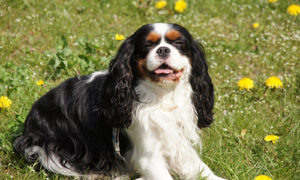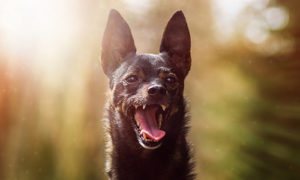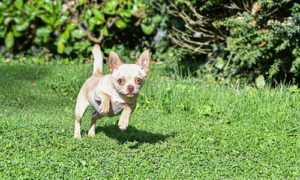
The Brussels Griffon is most likely a descendant of the Affenpinscher and a Belgian street dog, the Griffon d’Ecurie. Breeders developed them in Belgium, where they worked as guard dogs. They possess a cocky but witty character and probably attracted more admirers than discouraging robbers.
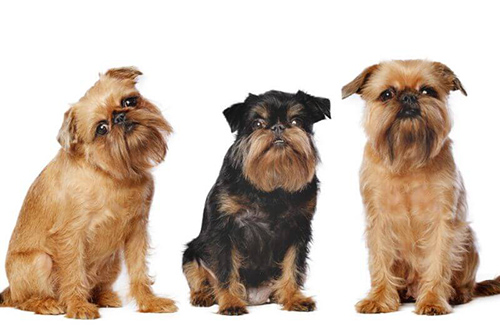
Later, around the late 1800s, the combination was crossed with the Pug, a popular dog in Holland. The Pug’s contribution to the breed is the brachycephalic head type, and the breed’s smooth-coated individuals went by the Petit Brabancon.
Unfortunately, the breed’s smooth members disappeared for a while; that’s why we call the breed we have today, Griffon, which means wiry. Thankfully, they made a comeback and finally accepted by 1880 and recognized at Belgium dog shows.
We believe that the breed also got crossed with the Yorkshire Terrier and English Toy Spaniel around the same time. The English Toy Spaniel further contributed to the Brussels Griffon’s head configuration. By the time the 1900s came along, this little guard dog was in high demand and was very popular with nobility in Belgium.
World War I nearly decimated the breed, but they recovered nicely and has since gained passionate followers worldwide. In many countries, only the red rough-coated dogs carry classification as the Brussels Griffon; however, the black rough-coated dogs classify as the Belgian Griffon; and the smooth-coated dogs classify as the Petit Brabancon.
Brussels Griffon Breed Facts
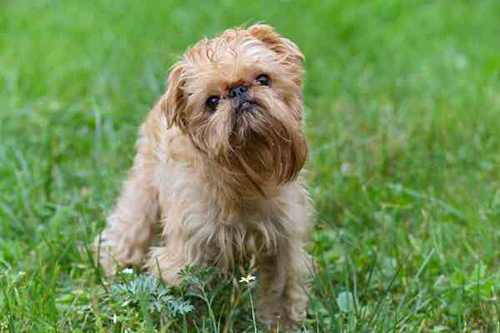
Temperament: We know The Brussels Griffon to be full of itself, over-pouring with self-confidence, bold, playful, mischievous, and stubborn. They’re usually civil with other dogs and pets. They’re very active and loves to climb and bark.
Therefore, it should always be under supervision. These dogs can also be quite the escape artists. The family that wants a pet that’s entertaining yet sensitive will love this breed. Unfortunately, they’re not a good choice for people with young children because of its sensitivity and size. They can be difficult to house-train and experience separation anxiety.

Upkeep: These are active dogs and are always down for some action. They require daily and mental physical stimulation. However, thanks to its small size, a robust indoor game can satisfy that needed stimulation. We also recommend a short daily walk on the leash. Their rough coats will need combing 2 to 3 times weekly. Shaping by stripping every 3 months is also important. However, the smooth coat is a lot easier to groom. Also, it requires occasional brushing to remove dead hair.
- Popularity: Mostly uncommon
- Family: Pinscher
- Origin: Belgium
- Date of Origin: 1800s
- Past function: Hunting rodents and other vermin, and companionship
- Current function: Companion
- Other names: Griffon Bruxellois, Griffon Beige, Belgian Griffon
- Life expectancy: 12 -15 years
- Weight: 8–10 pounds
- Height: 9–11 inches
Color: These dogs come in red, belge, black, and tan, or just black.
Group: They recognize The Brussels Griffon as a member of the AKC and UK Toy Group.
Health Problems
The Brussels Griffon has no major health problems. However, there are some minor things to look out for, such as bladder weakness, patellar luxation, distichiasis, cataracts, PRA, CHD, and Legg-Calvé-Perthes. Also, because of its size, a cesarean section is sometimes a necessity.
Brussels Griffon Characteristics
The Brussels Griffon is a square-proportioned, stocky, and a solid breed. It possesses good bone structure for its size. This dog moves with a determined gait, with an average reach and drive. It is full of itself in temperament, and its demeanor reflects this attitude.
Its almost human expression will garner plenty of attention and followers. The Brussels coat can be rough to the touch with hair that is hard and wiry. Also, the hair is much longer around its head. There are members of the breed that’s smooth, with a short glossy coat.


